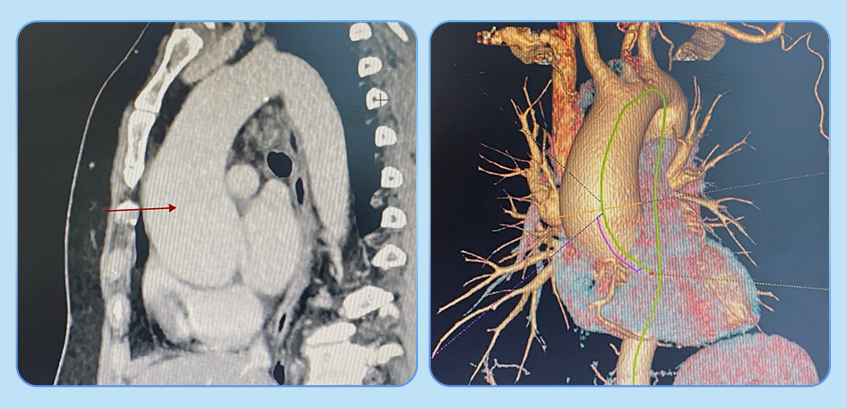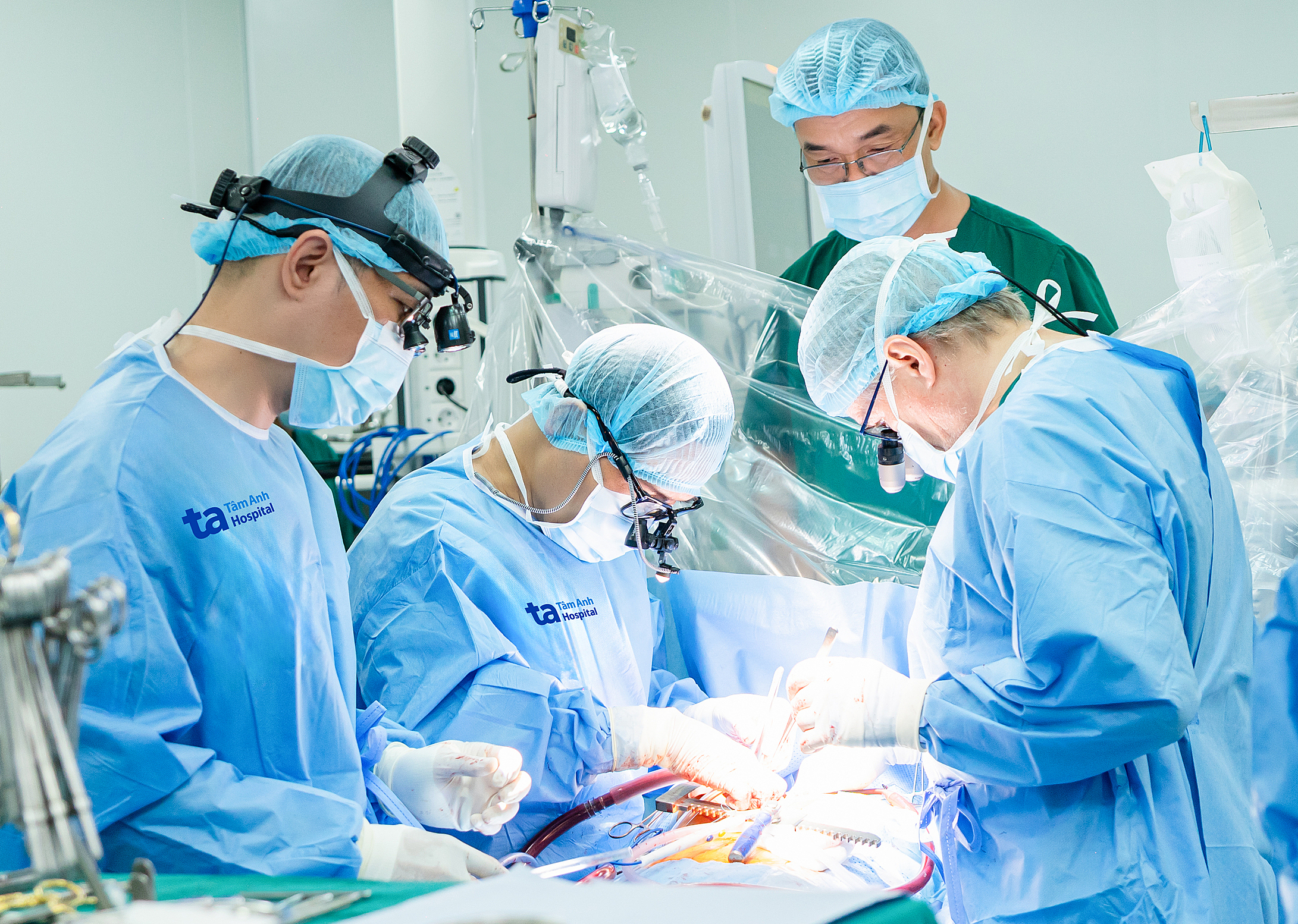The aorta carries blood from the heart to the rest of the body, with the ascending aorta being its initial section. An aortic aneurysm occurs when a section of the ascending aorta expands to more than 1.5 times its normal diameter. This can lead to two dangerous complications: rupture and dissection (a tear in the artery wall). Early detection and monitoring are crucial to determine the appropriate timing for intervention before complications arise.
Five years ago, Muong, who was experiencing no unusual symptoms, discovered a 47 mm aneurysm in her ascending aorta during a general health checkup. Although her doctor prescribed medication and scheduled regular follow-up appointments to monitor the aneurysm and intervene if necessary, she believed herself to be healthy and did not return for further checkups.
Recently, she visited Tam Anh General Hospital in Ho Chi Minh City, where Doctor Tran Thuc Khang, Deputy Head of the Cardiovascular Surgery Department, diagnosed her aneurysm as having grown to over 55 mm in diameter. She was also diagnosed with a bicuspid aortic valve (normally, the valve has three leaflets). A bicuspid aortic valve is a known cause of ascending aortic aneurysms. The abnormal blood flow through the two-leaflet valve (often swirling or off-center) puts pressure on the ascending aorta's wall, eventually leading to an aneurysm.
 |
A 1975 slice CT scan reveals the enlarged thoracic aortic aneurysm. Photo: *Tam Anh General Hospital* |
According to Doctor Khang, Muong was asymptomatic. However, due to the large size of the aneurysm and her history of hypertension, surgery was recommended to prevent complications. Treatment options vary depending on the location of the aneurysm and include open surgery, hybrid surgery (a combination of surgery and stent graft placement), or stent graft placement alone. For aneurysms in the ascending aorta, open surgery is the only option. Since Muong’s bicuspid aortic valve was still functioning well, the surgical team only replaced the enlarged section of the ascending aorta, preserving the valve.
The surgeons removed the enlarged section of Muong's ascending aorta and replaced it with an artificial graft, leaving her aortic valve intact. She was discharged 6 days after the surgery and continues to attend follow-up appointments. Post-operative checks confirm good healing of the surgical site, normal heart function, a well-functioning graft, and no stenosis or regurgitation of the bicuspid aortic valve.
 |
Doctor Khang (second from left) and the surgical team operating on the patient. Photo: *Thanh Luan* |
Doctor Khang recommends regular cardiovascular checkups for older individuals, those with a history of hypertension, diabetes, dyslipidemia, smokers, and those with a family history of certain genetic conditions (such as Marfan syndrome) or bicuspid aortic valve disease.
Ngoc Chau
* The patient's name has been changed
| Readers can submit questions about cardiovascular diseases here for doctors to answer. |












